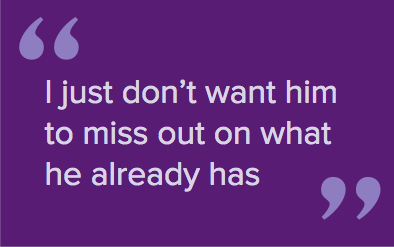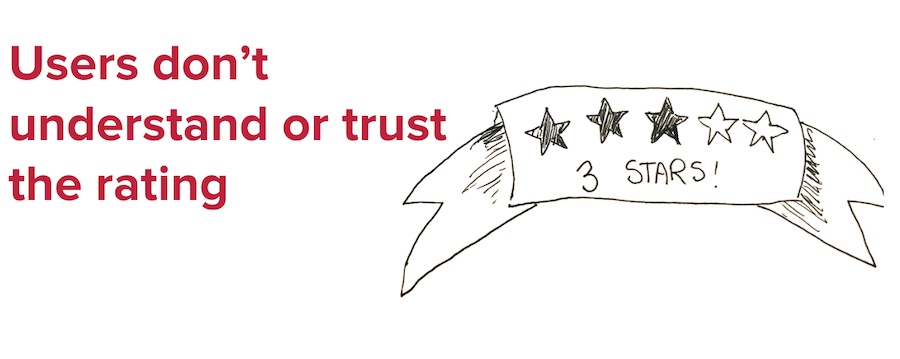
4 reasons why you can’t afford not to do research
You can’t build a house on sand.
Similarly, you can’t build a great digital product or strategy without truly understanding the people you are designing for.
Audience or user research is an essential task that identifies your audience and helps you understand their needs, emotions and pains. This enables you to find the opportunities that will deliver real value for the people you’re building for.
Yet oddly enough, it’s the first step that many skip in the rush to build that app, that product, that business that you’ve dreamed about and are sure is going to be the next big thing.
Over the years, we’ve taken on user and audience research for clients of all shapes and sizes. It might feel like you can’t afford to do user research, here are 4 compelling reasons why you can’t afford not to.
1. You can’t rely on subject matter experts alone
A subject matter expert (also known as SME) is someone who has a deep understanding of a product, process or technology.
When we’re in over our heads with a unique project, we listen to SMEs to leverage their expertise to solve complex problems and provide valuable insight. However, although we value SME wisdom, we always place greater worth on the opinions of another party —the audience.
Every product ultimately exists for its audience (and not the client). So how the product makes them feel, act and react is what matters most at the end of the day.
That’s why iterative research is so crucial.
Take for example…
Our work with Desirebull.
We were creating the first Tinder for bulls. It was a first-of-its-kind decision making tool for cattle breeders that involved simplifying complex genetic data into a farmer-friendly interface.
We wanted to come up with a new interesting way to visualise important data. So initially, we worked closely with genetics experts to come up with some initial concepts. However, when we sat down with breeders, we soon discovered that they didn’t want new. They were already comfortable with what they were used to, and weren’t keen on learning a whole new visual language.
What we originally thought was ‘well designed’ we realised simply didn’t click. User testing pushed us to rework our designs to create something that was much better understood by farmers.
2. What you think is valuable might not be
How many times have you thought you knew what was best for someone, only to figure out that you were way off? Like when you give a child a new toy, but they’re only interested in the box.
Sometimes what we think is valuable in a product, might not be for its recipient. That’s why research is vital. Research doesn’t just improve a product, it determines it.
Take for example…
The CropCount app.
CropCount is a mobile app we created that uses satellite imagery and GPS technology to help avocado farmers accurately forecast their yield. When we initially interviewed the farmers, we thought they wanted help accurately calculating their yield to help with their logistics and supply chain fulfilment. Makes sense right?
But, as we continued to dig deeper we discovered what was more useful and therefore important to them was actually maximising their yield. This changed the entire product design. If we had gone with what our client and our initial research deemed ‘right’, the app would’ve turned out very wrong.
3. People say things differently to what they actually do
Have you ever filled out a doctor’s form and fudged the numbers a little to say you exercise more or drink less than you actually do?
Who hasn’t.
People are always trying to present their best side and best case future scenario. This phenomenon is known as hypothetical bias, whereby people tell the honest truth, although what they say may not necessarily match up with their eventual actions.
Reality is often different to what is said, stressing once more, that research takes skill, understanding and experience.
Take for example…
CropCount again.
We asked our farmers what device to target, mobile or iPad. At first, almost everyone said the app definitely needed to be on their phone. But, when we trialled it in the field, we found that frequent incoming calls continually interrupted the flow of work.
Observation trumped what users originally said and revealed that tablets were actually a more important device for us to target. Budgets don’t always allow observational research, so if you have to rely on asking questions you want to make sure you are asking the right ones. If you can’t do observational research, you can instead ask people to tell you how they currently behave through real examples.
Take that hypothetical bias example above, instead of asking ‘How much exercise would you normally do each week?’ you are likely to get a more accurate understanding by asking ‘Last week, how many times did you exercise? Can you describe what you did and for how long’.
4. It’s crucial to understand context and emotion
Sometimes when conducting audience research, we tend to see our audiences as just ‘users’, and forget that they are people.
A holistic approach to understanding the people your product is serving is key to understanding not only the big picture, but the whole picture.
Context, nuance and emotion are all things that can be missed when you don’t do the right research, or forgo it entirely.
Take for example…
How we approached our research for the NDIS. The NDIS (National Disability Insurance Scheme) is the government scheme set up to support Aussies living with disabilities.
We took an extremely empathetic approach to our research, sitting down with participants, stakeholders and advocacy groups. It was through this approach that we were able to gain a deeper understanding of what people needed, and develop an effective marketing strategy founded on genuine empathy.
Our client was appreciative of the valuable research we gathered as the insights generated painted a deep understanding of their audience that they could draw on for all future communication and projects.

Research might seem tedious, time-consuming and downright boring at times. However, if you can get into the habit of conducting research that:
- Distills the true motivations of your audience (and not subject experts)
- Determines what your audience, not you, deems important
- Caters for potential hypothetical bias
- And takes context and human emotion into consideration
You will give yourself the best chance of creating a digital product that people will actually want to use and share.
Want to know more about your audiences or users for a digital project you’re working on? We know just the right team. Get in touch.
